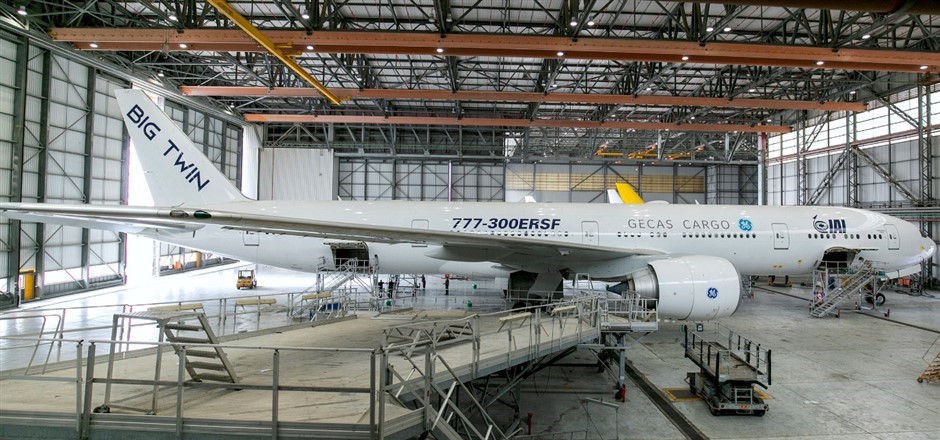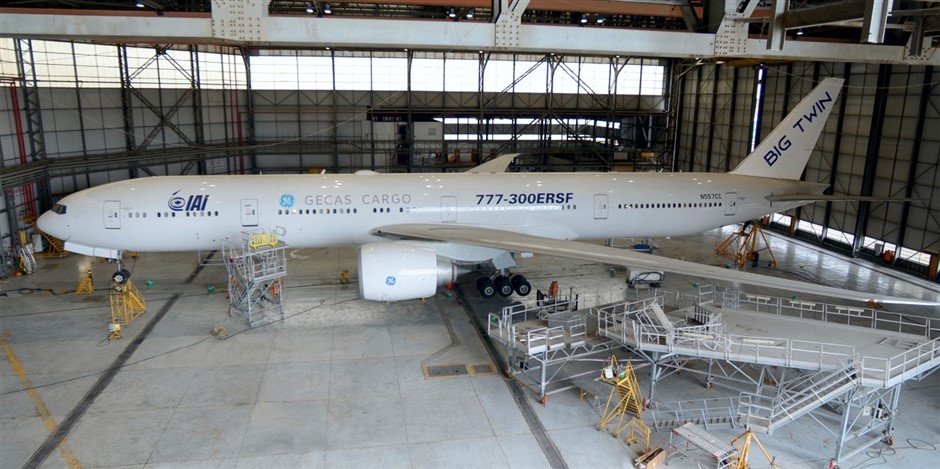

Israel Aerospace Industries (IAI) will hold a unique ‘flyover’ to salute the state of Israel and its citizens on the country’s 73rd Independence Day, scheduled today, 15 April between 12:00 and 14:30 (local time).
The company is drafting its cargo conversion prototypes for the B777 and B767, along with two G280 executive jets, which the company makes for Gulfstream. The three aircraft will fly over dozens of towns and villages from the north to south of Israel, which would be an interesting route for plane spotters. (Fact: Independence Day or Yom Ha’atzmaut was originally celebrated a month later on 14 May when future Prime Minster David Ben-Gurion declared Israel a state back in 1948.)
IAI recently completed the conversion process for the Boeing 767, which doubled its conversion lines this year, and it claims it was the first one to convert the B777-300ER for cargo use, working with GE Capital Aviation Services (GECAS) on the prgoramme.
In a recent announcement, GECAS and IAI shared a key milestone, passing the planned halfway phase of the supplemental type certificate (STC) development programme for the 777-300ERSF, dubbed the “Big Twin.” The project now moves beyond planning and into the phase of physically modifying the aircraft, with the prototype conversion to commence towards the end of June.
Also read: AerCap, GECAS merger forms world’s biggest jet lessor
“After extensive planning and preparation, the STC Development Program has already completed the critical design review (CDR) and subsequent design freeze of the 777-300ERSF,” the company added.
The prototype 777-300ER (MSN 32789) was delivered to IAI’s Tel Aviv facility in June of last year, with ground and flight tests already completed for the prototype. The aircraft is now back in Tel Aviv to enter its pre-conversion preparation phase. Upon completion, Kalitta Air will be the launch operator for the Big Twin.
IAI walks us through the arduous process: “A new passenger-to-freighter conversion programme requires significant planning and preparation before modifications—such as the addition of the main deck cargo door, freighter lining, window plugs, a modified crew compartment, a reinforced fuselage, an all-new floor structure to support the 222,000 lbs MSP, a 9G rigid cargo barrier, and a powered cargo loading system—can get underway. Moreover, obtaining the STC requires satisfying stringent requirements of civil aviation authorities.”
Rich Greener, SVP and manager of GECAS Cargo, said that they are now executing on the design developed towards manufacturing the kits, and the actual conversion phase under a licensing from Boeing.
“By leveraging our fleet of passenger aircraft to provide freighter conversion feedstock, we’re delivering on our strategy to meet the need for replacement of retiring freighters and increased demand for dedicated cargo capacity,” Greener noted. “We see the Big Twin meeting requirements of the air cargo industry for the next 20 years, so entering this next phase is thrilling.”










